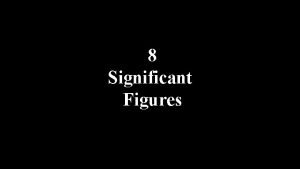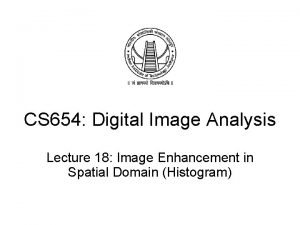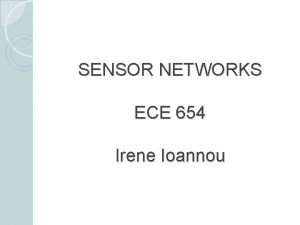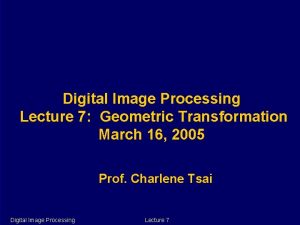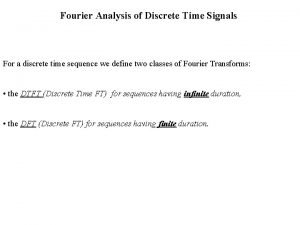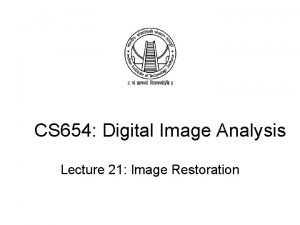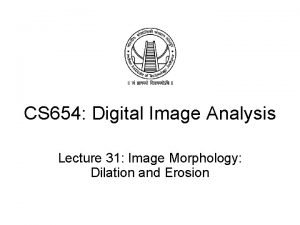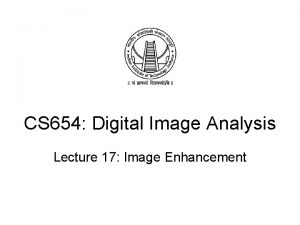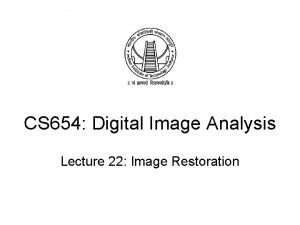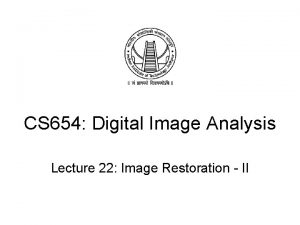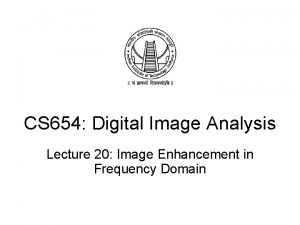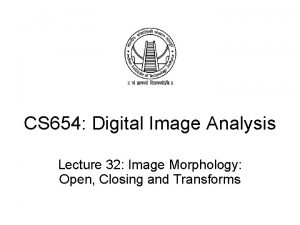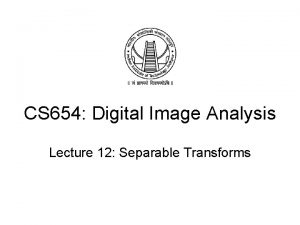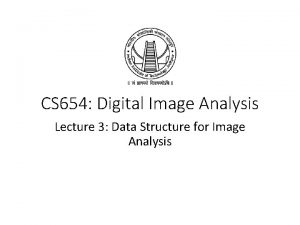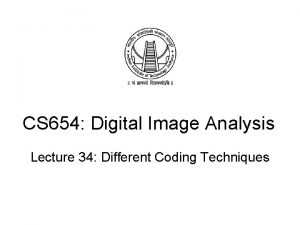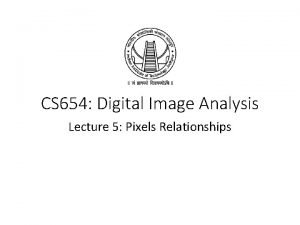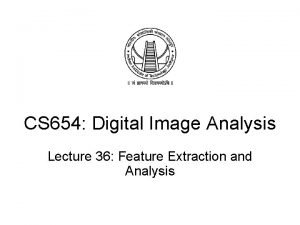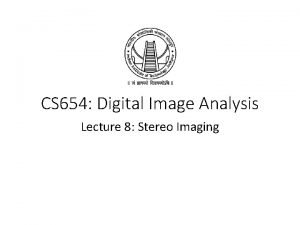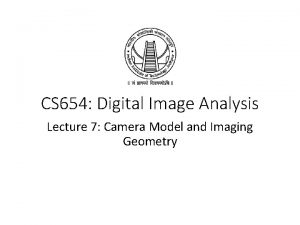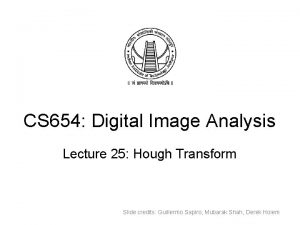CS 654 Digital Image Analysis Lecture 13 Discrete




















- Slides: 20

CS 654: Digital Image Analysis Lecture 13: Discrete Fourier Transformation

Recap of Lecture 12 • Unitary transform • Separable transform • Kronecker Product • Improvement of computational complexity

Outline of lecture 13 • Discrete Fourier transformation • 1 D and 2 D • Separable DFT • Fast Fourier Transform

Kronecker Products Computational complexity? ? Fast image transforms

Validation using Basis images Verification using:

Basis images Real part of the Fourier transform basis images.

Properties of Unitary transform • Energy Conservation • Energy compaction • Decorrelation

Introduction • 1 -D Unitary transform Transformation matrix to be chosen appropriately Forward transformation Reverse transformation

Discrete Fourier Transformation (DFT) • Let the transformation matrix be defined as For ease of notation

Inverse DFT • Then the inverse DFT will be defined as: Is the transformation unitary?

Unitary DFT • Unitary forward and reverse DFT equations are defined as Using matrix notation where,

Is matrix used for DFT Unitary? Magnitude of each row is equal to 1 Rows are orthogonal to each other

2 -D DFT Forward transformation Reverse transformation

Unitary 2 -D DFT Forward transformation Reverse transformation

Separable 2 -D DFT

Significance of Separability 1 -D case: Using the 1 D analogy

Visualization of separability (0, 0) Transform over column for each row (0, 0) Input image (0, 0) Transform over rows for each columns DFT image

Magnitude and Phase of DFT Magnitude: Phase: Input image Magnitude Phase angle

Illustration of reconstruction Input Image 1 (Woman) Reconstructed only using the magnitude Phase angle of Input (IPA 1) Reconstructed only using IPA 1

Thank you Next Lecture: Properties of DFT
 Sig figs of logs
Sig figs of logs 654 to 1 significant figure
654 to 1 significant figure 654
654 Ece 654
Ece 654 Translate
Translate Optimum notch filter in image processing
Optimum notch filter in image processing Image compression in digital image processing
Image compression in digital image processing Image segmentation in digital image processing
Image segmentation in digital image processing Analog image and digital image
Analog image and digital image Lossless image compression matlab source code
Lossless image compression matlab source code Image sharpening and restoration
Image sharpening and restoration Image geometry in digital image processing
Image geometry in digital image processing False contouring
False contouring Walsh transform in digital image processing
Walsh transform in digital image processing Maketform matlab
Maketform matlab Noise
Noise 01:640:244 lecture notes - lecture 15: plat, idah, farad
01:640:244 lecture notes - lecture 15: plat, idah, farad Image processing lecture notes
Image processing lecture notes Image processing lecture
Image processing lecture Fourier analysis of discrete time signals
Fourier analysis of discrete time signals Exploratory data analysis lecture notes
Exploratory data analysis lecture notes

